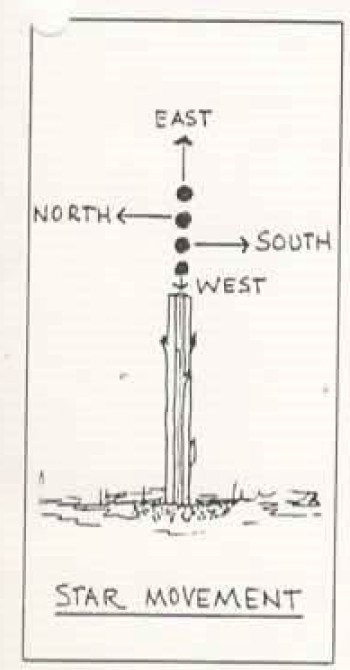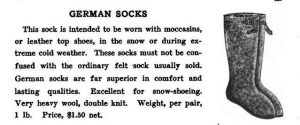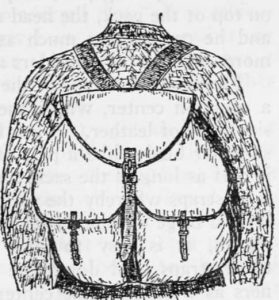




Kephart: The man who goes out alone for a week or so in the fall of the year, or at an altitude where the nights always are cold, should be fit to carry on his back from 40 to 50 pounds at the outset—of course the pack lightens as he consumes rations. I am not including weight of gun, cleaning implements, and ammunition. He should wear woolen underwear of medium weight, thick and soft woolen socks, army overshirt, kersey or moleskin trousers, leather belt with pockets (not loops) for clips [sic. more likely chargers or stripper-clips than clips] or loose cartridges, hunting shoes of medium height for ordinary use, felt hat, and, at times, buckskin gloves.

A mere shelter cloth is too breezy for this season (there will be no opportunity to build a thatched camp, as the hunter will be on the move from day to day). He needs a half-pyramid tent, say of the Royce pattern (Vol.I., pp.85-91) but somewhat smaller, and weighing not over 4 pounds.

There are plenty of good ways to cook without boiling, stewing, or roasting in an oven (see Vol.I.), which are processes that require vessels too bulky for a foot traveler to bother with.


Pack sack, with tump strap…2lb 12oz
Tent…4lb
Sleeping-bag…8lb
Pillow bag*…3oz
Rubber cape*…1lb 5oz
Mackinaw stag shirt…1lb 8oz
Spare underwear, 1 suit…1lb 8oz
Spare socks, 2 pairs…5oz
Moccasins…1lb
German socks…12oz
Axe and muzzle…1lb 12oz
Cooking kit, dish towel, tin cup*…2lb 2oz
Cheese cloth…2oz
Mill file, 6 in…2oz
Whetstone*…2oz
Pliers*…4oz
Wallet, fitted*…6oz
Twine*…2oz
Toilet articles*…6oz
Talcum powder*…2oz
Toilet paper*…1oz
First aid kit*…5oz
Spare matches, in tin…6oz
Alpina folding lantern…8oz
Candles, ½ doz…8oz
Emergency ration [probably the “camper’s emergency ration” mentioned on p.167]…8oz
Tobacco, in wpf. bag…8
Spare pipe…3
Total pack without provisions …28lb 120z
One Week’s Rations (not including fresh meat)
Flour…4lb
Baking powder…4oz
Meal, cereal…1lb oz8
Milk powder…8oz
Butter…8oz
Bacon…2lb
Egg powder…8oz
Raisins…8oz
Dried apricots, prunes…1lb
Sugar…1lb
Chocolate…12oz
Coffee…8oz
Tea…2oz
Salt…4oz
Total [weight of food]…13lb 6oz
Provision bags, etc…10oz
Total…14lb
Pack complete…42lb 12oz